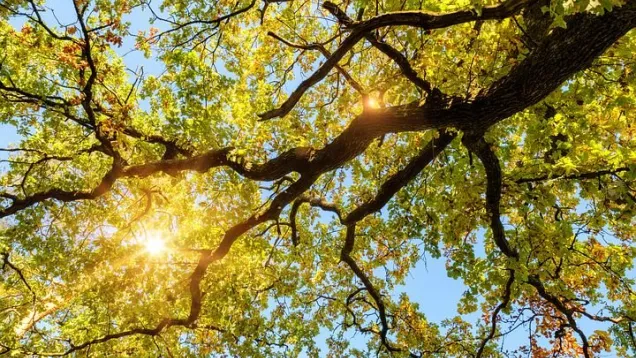
 While normally I focus our Lunch and Learn sessions on current projects or urban forestry best practices, the topic for this session was chosen based on questions received during the first few sessions and a poll of participants during an October session. Based on this feedback, by popular demand, at this session we discussed Native Tree Species Selection. You can watch the recording of the session on the Public Works Department's YouTube channel - and don't forget our next session on the new Google tree canopy AI tool on Weds. Feb 10th at 12:30 at zoom.us/j/98888984277.
While normally I focus our Lunch and Learn sessions on current projects or urban forestry best practices, the topic for this session was chosen based on questions received during the first few sessions and a poll of participants during an October session. Based on this feedback, by popular demand, at this session we discussed Native Tree Species Selection. You can watch the recording of the session on the Public Works Department's YouTube channel - and don't forget our next session on the new Google tree canopy AI tool on Weds. Feb 10th at 12:30 at zoom.us/j/98888984277.
The first step in species selection must always be evaluating the site conditions where the tree will be planted. This work includes consideration of the space and soil available for future growth of the tree's roots, the space above and around the tree to allow for canopy growth, as well as the climate zone, soil type, desired ecosystem services (such as air quality, shade and wildlife habitat), and community preferences. When evaluating the location for street trees in particular, we look at the size of the parkway or tree well and the proximity of any overhead power lines or other infrastructure.
After taking all the site conditions into account, we can consider which tree species will thrive under those conditions. Every tree planted represents City investments into staff time for procurement, planting, establishment, and long term maintenance. We want to plant trees that will have the best opportunity to provide significant benefits and live long, healthy and productive lives in very challenging conditions.
The tree species that are native to Los Angeles largely grew in our hillside communities and around rivers and streams. Some of them, like the coast live oak (Quercus agrifolia) require more space than is typically available in our parkways. Other smaller native trees that could grow in narrower parkways without causing sidewalk damage naturally grow in a shape that is short and wide, making their branches likely to obstruct the pedestrian right of way. The trees that grew along our waterways, like the much-beloved California sycamore (Platanus racemosa), like having their roots in well-drained soil with access to additional water. These are all wonderful plants that are unfortunately not well suited to most street tree locations. While we try, as much as possible, to prioritize native trees that provide the most habitat value to native and migratory birds and other wildlife, we also must consider the services we want trees to provide to our residents - shade and cooling, air quality improvements, as well as economic, mental and physical health benefits.
As we further our conversations around tree species and habitat opportunities, I will continue to collaborate with LA Sanitation and the Environment’s Biodiversity team, as well as the Department of City Planning’s Urban Ecologist, to look at where we should prioritize the planting of native species to provide critical habitat connectivity.
My favorite part of this session was the opportunity to solicit your feedback. The images shown below rank the answers of three of the four questions I asked. (NOTE: In the word clouds, the bigger the word, the more popular the answer.) The fourth question, “What are strategies you think the City should consider when trying to encourage incorporation of native trees and urban wildlife?” elicited over 120 responses. I look forward to sharing the themes that ran through those suggestions during a future Lunch and Learn session.
Resource links:
The “Healthy Soils for Healthy Communities” Initiative being led by TreePeople
LASAN Biodiversity page including link to the 2020 Biodiversity Report
Eric Wood’s research “The importance of street trees to urban avifauna”